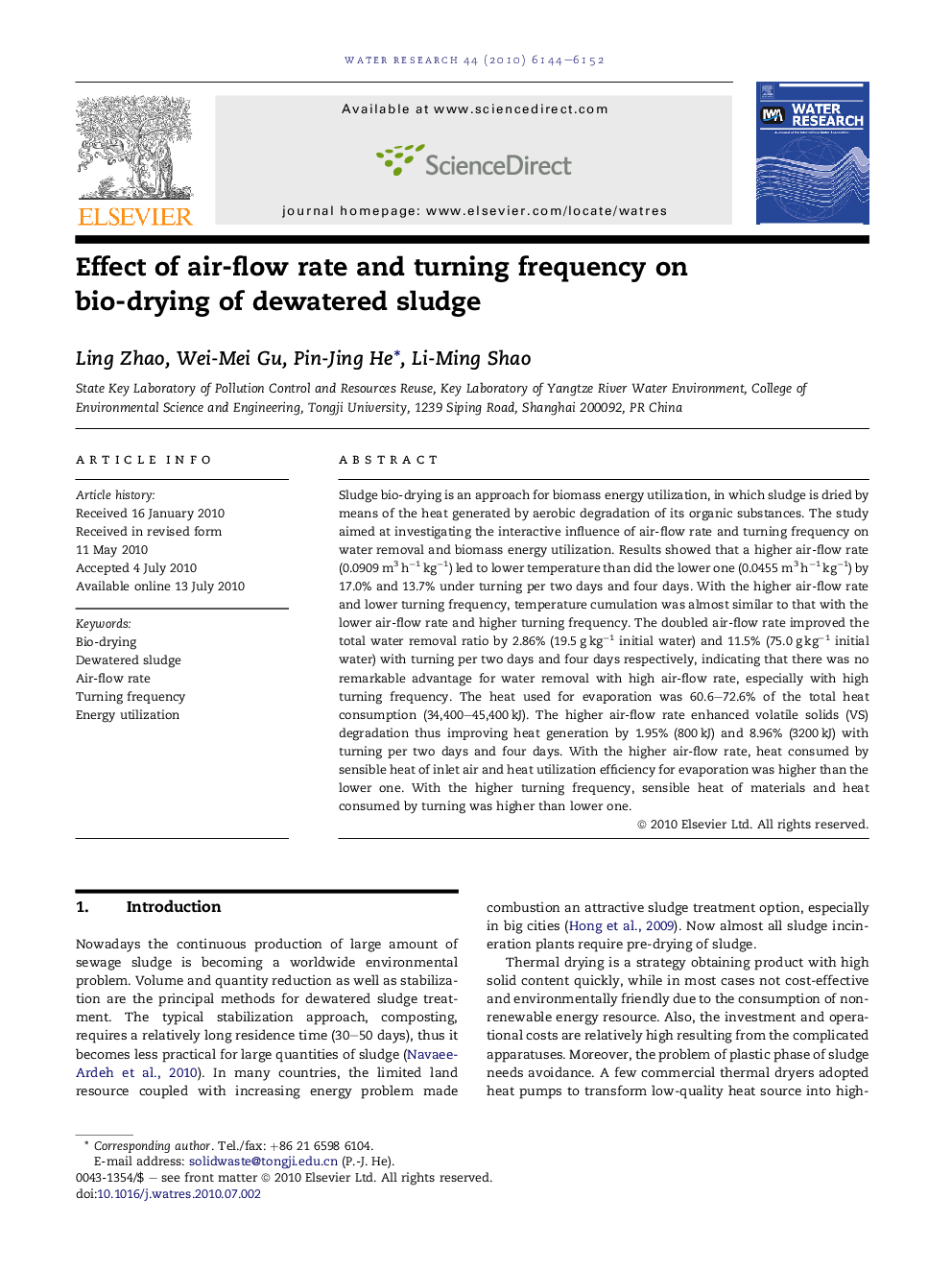| Article ID | Journal | Published Year | Pages | File Type |
|---|---|---|---|---|
| 4483703 | Water Research | 2010 | 9 Pages |
Sludge bio-drying is an approach for biomass energy utilization, in which sludge is dried by means of the heat generated by aerobic degradation of its organic substances. The study aimed at investigating the interactive influence of air-flow rate and turning frequency on water removal and biomass energy utilization. Results showed that a higher air-flow rate (0.0909 m3 h−1 kg−1) led to lower temperature than did the lower one (0.0455 m3 h−1 kg−1) by 17.0% and 13.7% under turning per two days and four days. With the higher air-flow rate and lower turning frequency, temperature cumulation was almost similar to that with the lower air-flow rate and higher turning frequency. The doubled air-flow rate improved the total water removal ratio by 2.86% (19.5 g kg−1 initial water) and 11.5% (75.0 g kg−1 initial water) with turning per two days and four days respectively, indicating that there was no remarkable advantage for water removal with high air-flow rate, especially with high turning frequency. The heat used for evaporation was 60.6–72.6% of the total heat consumption (34,400–45,400 kJ). The higher air-flow rate enhanced volatile solids (VS) degradation thus improving heat generation by 1.95% (800 kJ) and 8.96% (3200 kJ) with turning per two days and four days. With the higher air-flow rate, heat consumed by sensible heat of inlet air and heat utilization efficiency for evaporation was higher than the lower one. With the higher turning frequency, sensible heat of materials and heat consumed by turning was higher than lower one.
